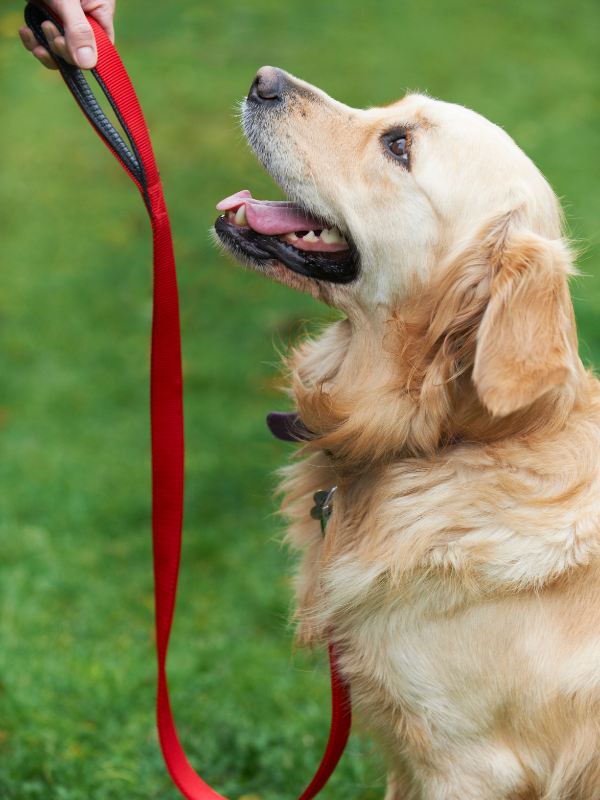737-215-3211

Is Clicker Training Right for Your Dog?
Are you a dog owner looking for an effective and humane training method for your furry companion? Clicker training may be the solution you've been searching for. In this article, we will explore the topic of clicker training and whether it is the right approach for your dog. We'll delve into the principles, benefits, and techniques of clicker training, giving you the knowledge you need to make an informed decision.
The Basics of Clicker Training
Clicker training is a positive reinforcement technique that involves the use of a small handheld device called a clicker. The clicker emits a distinct sound, which is followed by a reward when the dog performs a desired behavior. This method is based on the principles of operant conditioning, where the dog associates the sound of the clicker with a positive outcome, such as a treat or praise.
Understanding Clicker Training
To understand whether clicker training is right for your dog, it's important to grasp the underlying concepts. Clicker training relies on positive reinforcement, which means rewarding desired behaviors instead of punishing unwanted ones. By using the clicker as a marker for good behavior, you can communicate with your dog effectively and reinforce positive actions.
Principles of Clicker Training
Clicker training operates on several key principles that make it an effective and humane training method. These principles include:
- Association: The clicker sound is associated with rewards, creating a strong positive association in the dog's mind.
- Timing: The clicker must be clicked at the exact moment the desired behavior is performed to reinforce the connection between the action and the reward.
- Consistency: Consistency is crucial in clicker training to ensure clear communication and avoid confusion.
- Progressive Reinforcement: Clicker training focuses on progressively reinforcing behaviors, starting with simple actions and gradually building up to more complex tasks.
Benefits of Clicker Training
Clicker training offers numerous benefits for both dogs and their owners. Some of the key advantages include:
- Clear Communication: The clicker provides a precise and consistent way to communicate with your dog, making it easier for them to understand what behavior is being rewarded.
- Positive Reinforcement: Clicker training focuses on positive reinforcement, creating a positive and enjoyable training experience for your dog.
- Enhanced Bonding: Clicker training strengthens the bond between you and your dog, as it is based on trust, cooperation, and mutual understanding.
- Versatility: Clicker training can be used to teach a wide range of behaviors, from basic obedience commands to advanced tricks and skills.
Getting Started with Clicker Training
Now that you have a good understanding of clicker training, let's explore how you can get started with this method:
- Choose a Clicker: Select a suitable clicker that produces a distinct and consistent sound.
- Condition the Clicker: Introduce the clicker to your dog by clicking and immediately offering a reward. Repeat this process several times to establish the association between the clicker sound and the reward.
- Start with Simple Behaviors: Begin training with simple behaviors that your dog already knows, such as "sit" or "stay." Click as soon as your dog performs the desired behavior and reward them promptly.
- Shape Behaviors: Gradually shape new behaviors by breaking them down into smaller steps. Click and reward each successful attempt, gradually increasing your expectations.
- Be Patient and Consistent: Clicker training requires patience and consistency. Practice short training sessions regularly to maintain progress and avoid overwhelming your dog.
Step-by-Step Guide to Clicker Training
To help you navigate the clicker training process, follow this step-by-step guide:
- Step 1: Choose Your Training Goals: Determine what behaviors or commands you want to teach your dog.
- Step 2: Break Behaviors Down: Analyze each behavior and break it down into smaller, achievable steps.
- Step 3: Capture Behaviors: Observe your dog's natural actions and click and reward any behavior that aligns with your training goals.
- Step 4: Add Verbal Cues: Introduce verbal cues for each behavior once your dog consistently performs them in response to the clicker.
- Step 5: Generalize Behaviors: Practice the behaviors in various locations and situations to ensure your dog understands them in different contexts.
- Step 6: Phase Out the Clicker: Gradually reduce the reliance on the clicker by rewarding behaviors intermittently instead.
Common Challenges in Clicker Training
While clicker training is generally effective, it's important to be aware of potential challenges that may arise during the training process. Some common challenges include:
- Timing Issues: Clicking at the wrong time can confuse your dog and weaken the association between the clicker and the reward. Practice your timing to ensure accuracy.
- Lack of Focus: If your dog becomes distracted during training sessions, consider working in a quiet environment with minimal distractions.
- Overwhelming Expectations: Setting unrealistic expectations or progressing too quickly can lead to frustration for both you and your dog. Take it slow and break behaviors into manageable steps.
- Inconsistency: Inconsistency in training can confuse your dog and hinder progress. Make sure everyone involved in training uses the same techniques and cues.
Advanced Clicker Training Techniques
Once you and your dog have mastered the basics of clicker training, you can explore more advanced techniques to enhance your training sessions. Some advanced clicker training techniques include:
- Chaining Behaviors: Linking multiple behaviors together to create a sequence of actions.
- Shaping Complex Behaviors: Shaping intricate behaviors by reinforcing small incremental steps toward the final behavior.
- Target Training: Teaching your dog to touch or follow a target object, which can be useful for teaching specific tasks or tricks.
Clicker Training vs. Other Methods
While clicker training has proven to be an effective and positive training method, it's essential to consider other training approaches as well. Every dog is unique, and different methods may yield varying results. Some popular training methods to explore include:
- Positive Reinforcement Training: Similar to clicker training, positive reinforcement training focuses on rewarding desired behaviors rather than punishing unwanted ones.
- Reward-Based Training: Utilizing rewards, such as treats or praise, to motivate and reinforce positive behaviors.
- Traditional Training Methods: Employing more traditional training techniques that involve verbal commands and physical guidance.
Frequently Asked Questions
Q: Is clicker training suitable for all dogs? A: Clicker training is generally suitable for most dogs, regardless of age, breed, or size. However, some dogs may respond better to alternative training methods.
Q: How long does it take to see results with clicker training? A: The time it takes to see results can vary depending on the individual dog and the complexity of the behavior being trained. Consistency and patience are key.
Q: Can clicker training be used for behavior modification? A: Yes, clicker training can be effective for behavior modification. By rewarding desired behaviors and redirecting unwanted ones, you can help reshape your dog's behavior.
Q: Can I use clicker training for aggressive dogs? A: Clicker training can be used to address certain behavioral issues, but it is crucial to seek guidance from a professional dog trainer or behaviorist when dealing with aggression.
Q: Is clicker training only for puppies? A: Clicker training is suitable for dogs of all ages. It can be a valuable tool for teaching puppies and adult dogs new behaviors or refining existing ones.
Q: What if my dog is afraid of the clicker sound? A: If your dog is fearful of the clicker sound, you can try using a softer clicker or a verbal marker, such as saying "yes" or using a unique word.
Conclusion
Clicker training can be a highly effective and rewarding way to train your dog. By understanding the principles, benefits, and techniques of clicker training, you can make an informed decision on whether it is the right approach for your furry friend. Remember to be patient, consistent, and always prioritize positive reinforcement. With time and dedication, clicker training can strengthen the bond between you and your dog while fostering well-behaved and happy companionship.





Leave a comment